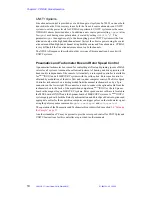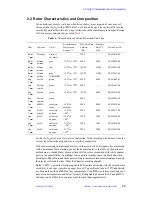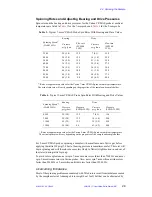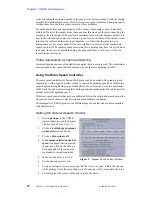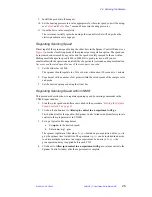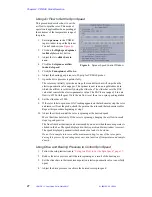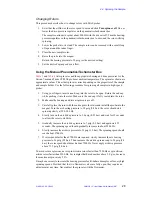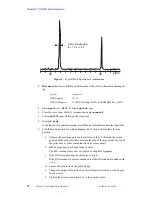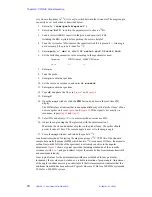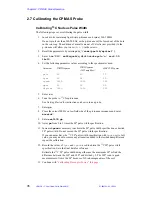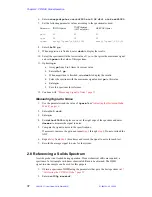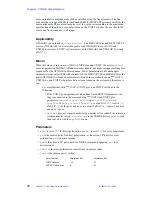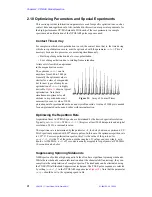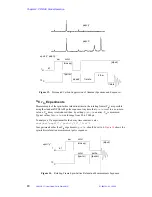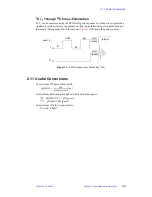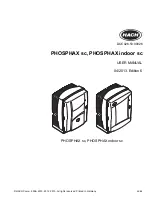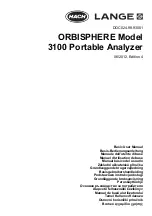
Chapter 2. CP/MAS Solids Operation
33
VNMR 6.1C User Guide: Solid-State NMR
01-999162-00 C0402
very close in frequency to
13
C, it is easy to switch between the two nuclei. The magic angle
can easily be set or checked as described below.
1.
Enter
rt(‘/vnmr/parlib/xpolar1’)
.
2.
Enter
tn='Br79'
to obtain the parameter set to observe
79
Br.
3.
Load a rotor with KBr, insert it in the probe, and spin it at 3 kHz.
Grinding the KBr crystals before packing the rotor is helpful.
4.
Tune the system for
79
Br (remove the capacitor stick if it is present) — retuning is
not necessary if the probe is tuned for
13
C.
5.
Enter
xpol='n' dm=’n’ d1=0.02 sw=1e5 at=0.02
nt=16 lb=0
.
6.
Set the following parameter value according to the spectrometer used:
7.
Enter
su
.
8.
Tune the probe.
9.
Enter
ga
to obtain a spectrum.
10. Set the cursor on resonance, and enter
nl movetof
.
11. Enter
ga
to obtain a spectrum.
12. Type
df
and phase the fid as in
13. Enter
gf
.
14. Open the
acqi
window, click the FID button, and observe the real-time FID
display.
The FID displays a transient that is an exponential decay with a “picket fence” of one
or more spikes on it (see
). If the signal is not exactly on
resonance, repeat
and
.
15. Select IPA and adjust
phfid
to maximize the on resonance FID.
16. Adjust the angle using the fiberglass rod with the adjustment tool.
Maximize the size and number of spikes in the picket fence. The spikes should
persist for about 10 ms. The sample angle is now set to the magic angle.
17. Close the
acqi
window and retune the probe to
13
C.
An alternative method of adjusting the magic angle uses
13
C CP/MAS of the standard
sample, hexamethylbenzene (HMB), which has two
13
C resonances. Of these, the aromatic
carbon line (on the left side of the spectrum) is extremely sensitive to the angular
adjustment.
shows a typical spectrum, including sidebands, of the aromatic
resonance (with
lb=0
and good shims). Adjust the aromatic line for minimum linewidth
and maximum intensity.
Once typical values for the minimum linewidths are established for any particular
instrument, these values can be taken as a reliable indication of proper angle. Adjustment
of the angle is neither necessary nor desirable if the first measurement indicates that the
minimum linewidth has been achieved. Typical values are 67 Hz for a 300 MHz system and
90 Hz for a 400 MHz system.
Parameter
INOVAcpmas
MERCURYcpmas
gain
15
10

